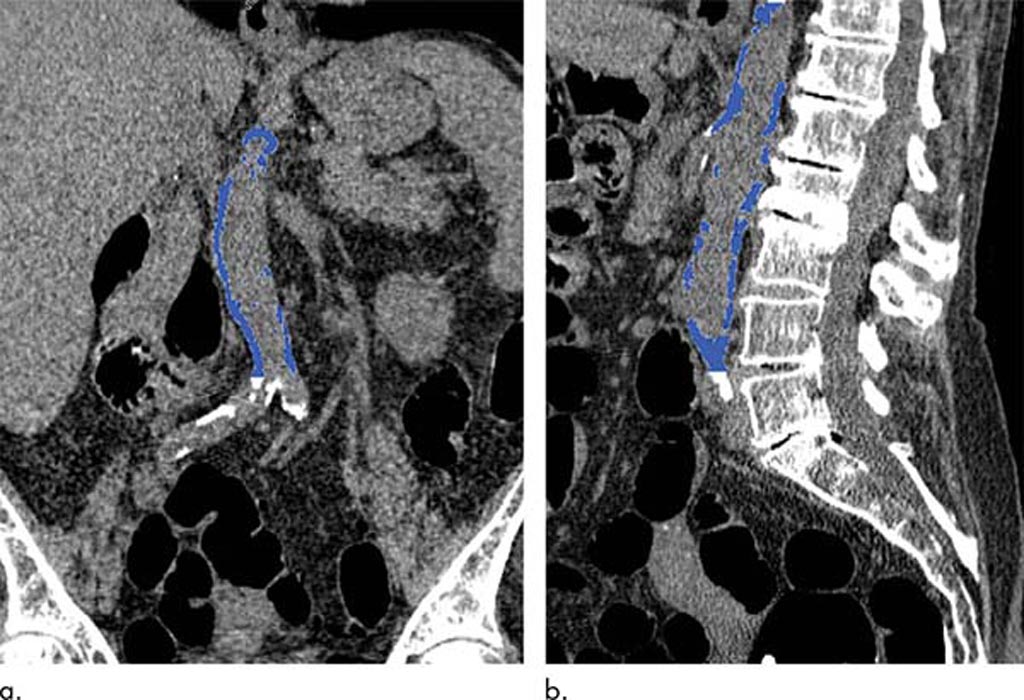Abdominal Aortic Calcification Predicts Cardiovascular Events
By MedImaging International staff writers
Posted on 22 Oct 2018
A new study examines the potential of abdominal aortic calcification (AAC) computerized tomography (CT) assessment as an opportunistic screening tool for adverse cardiovascular events.Posted on 22 Oct 2018
Researchers at the Medical College of Wisconsin (Milwaukee, USA) and the University of Wisconsin (WISC; Madison, USA) conducted a retrospective study involving 829 patients (mean age, 57.9 years) who underwent CT colonography screening during 2004 and 2005. The patient’s electronic medical record (EMR) was reviewed for subsequent cardiovascular events for a mean follow-up interval of 11.2 years. CT-based AAC was quantified and then compared to the Framingham risk score (FRS).

Image: CT colonography showing segmented AAC (Photo courtesy of Stacy O’Connor/ MCW).
The results revealed that 18.8% of the patients underwent a major cardiovascular event, which occurred on average almost seven years after the CT, and included heart attack in 39 patients and death in 79. CT-based AAC was a strong predictor of future cardiovascular events, outperforming the FRS. Subsequent analysis revealed that AAC levels were more than five times higher, on average, among those who had a cardiovascular event than among those who did not. The study was published on October 2, 2018, in Radiology.
“We found a strong association between abdominal aortic calcification and future cardiovascular events. With heart disease being a leading cause of death, anything we can do to make our patients more aware of their risk is going to help,” said lead author Stacy O’Connor, MD, MPH, of MCW. “Thousands of CT scans are performed every day across the United States, so this gives us an opportunity to reach a lot of people. For instance, if someone is getting a scan for cholecystitis and we see AAC on the CT, we can address things like blood pressure and cholesterol with the patient.”
The FRS is a gender-specific algorithm developed using data obtained from the Framingham Heart Study in order to estimate to estimate 10-year risk of developing coronary heart disease (CHD), cardiovascular (CVD), cerebrovascular events, peripheral artery disease (PAD) and heart failure (HF). Metrics include age and age range, sex, LDL, HDL, and total cholesterol, dyslipidemia, blood pressure and hypertension treatment, and smoking. In the updated FRS score, diabetes is excluded.
Related Links:
Medical College of Wisconsin
University of Wisconsin














